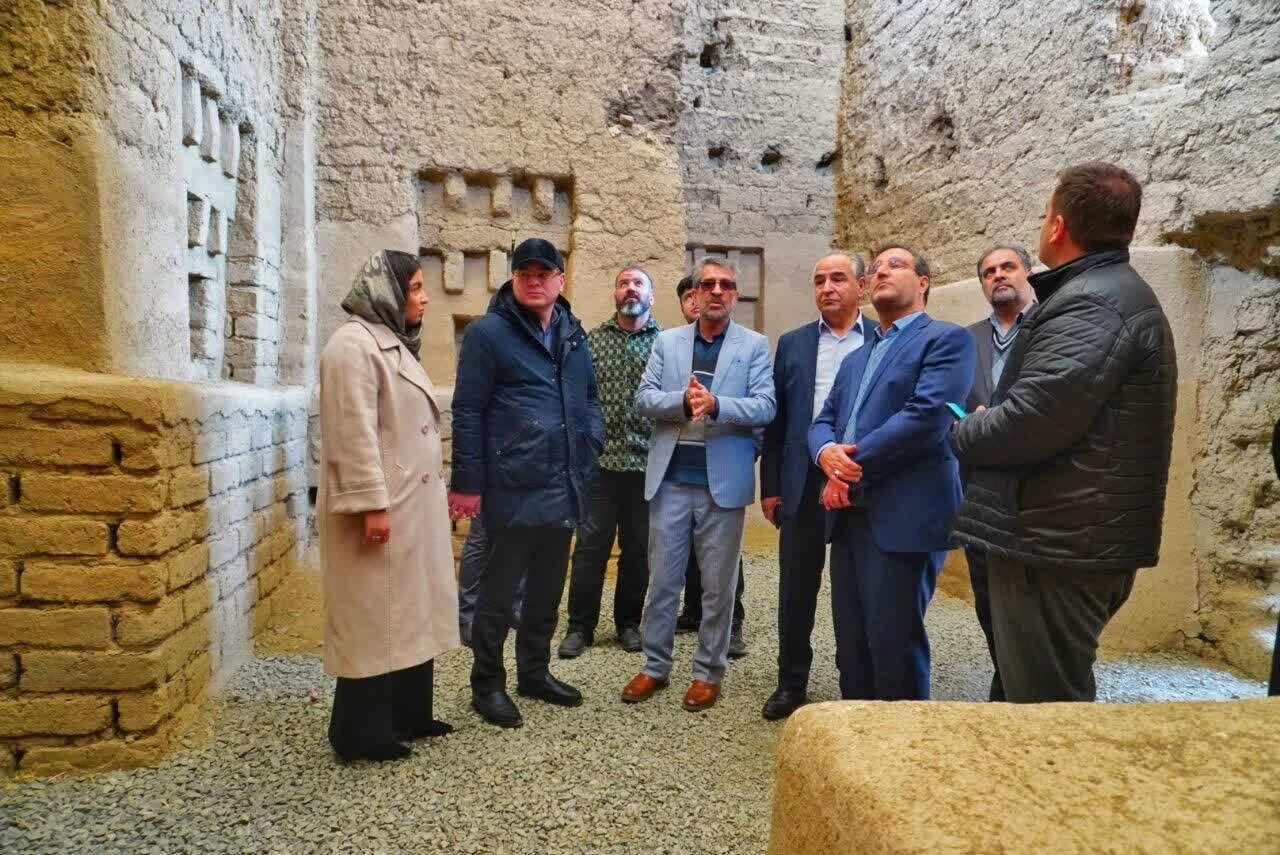Uzbek ambassador explores ancient Noushijan Citadel on visit to Malayer

TEHRAN – Fariduddin Nasriyev, Ambassador of Uzbekistan to Iran, has visited the historic Noushijan Citadel in Malayer during a one-day trip to the city.
The ancient site, located 15 kilometers northwest of Malayer, stands as one of the most significant archaeological landmarks in the region.
Ebrahim Jalili, head of the Malayer Department of Cultural Heritage, Tourism, and Handicrafts, highlighted the site's importance, noting that Noushijan is one of the oldest mud-brick temples in the world, dating back to the first millennium BCE. He explained that the citadel, built during the Median period, features a unique architectural style and has been a key discovery in understanding ancient Iran.
Jalili pointed out that the site reveals three distinct phases of settlement, with traces from the Median, Achaemenid, and Parthian periods. The Noushijan Citadel, known for its impressive mud-brick architecture, includes several significant structures such as a columned hall, central temple, storerooms, entrances, and ritual spaces. During the Median era, it served both religious and defensive purposes.
The visit is part of ongoing efforts to strengthen cultural and economic ties between Iran and Uzbekistan. Malayer and the Uzbek city of Khokand are sister cities, connected through their shared tradition of wood carving.
The Noushijan Citadel, registered as a national heritage site in 1967, has been the subject of extensive archaeological excavation since 1962. The excavations revealed three cultural layers, with the Median settlement occupying a key layer from the 8th to 6th centuries BCE. Findings from the site include nine ancient structures, a fire temple, a columned hall, and other significant architectural features.
At over 7,000 years old, the Noushijan Citadel remains a symbol of Iran's rich history and architectural heritage. Its location on a hill suggests that around 4,000 years ago, the surrounding area was submerged, with the citadel being the only structure above water.
Leave a Comment